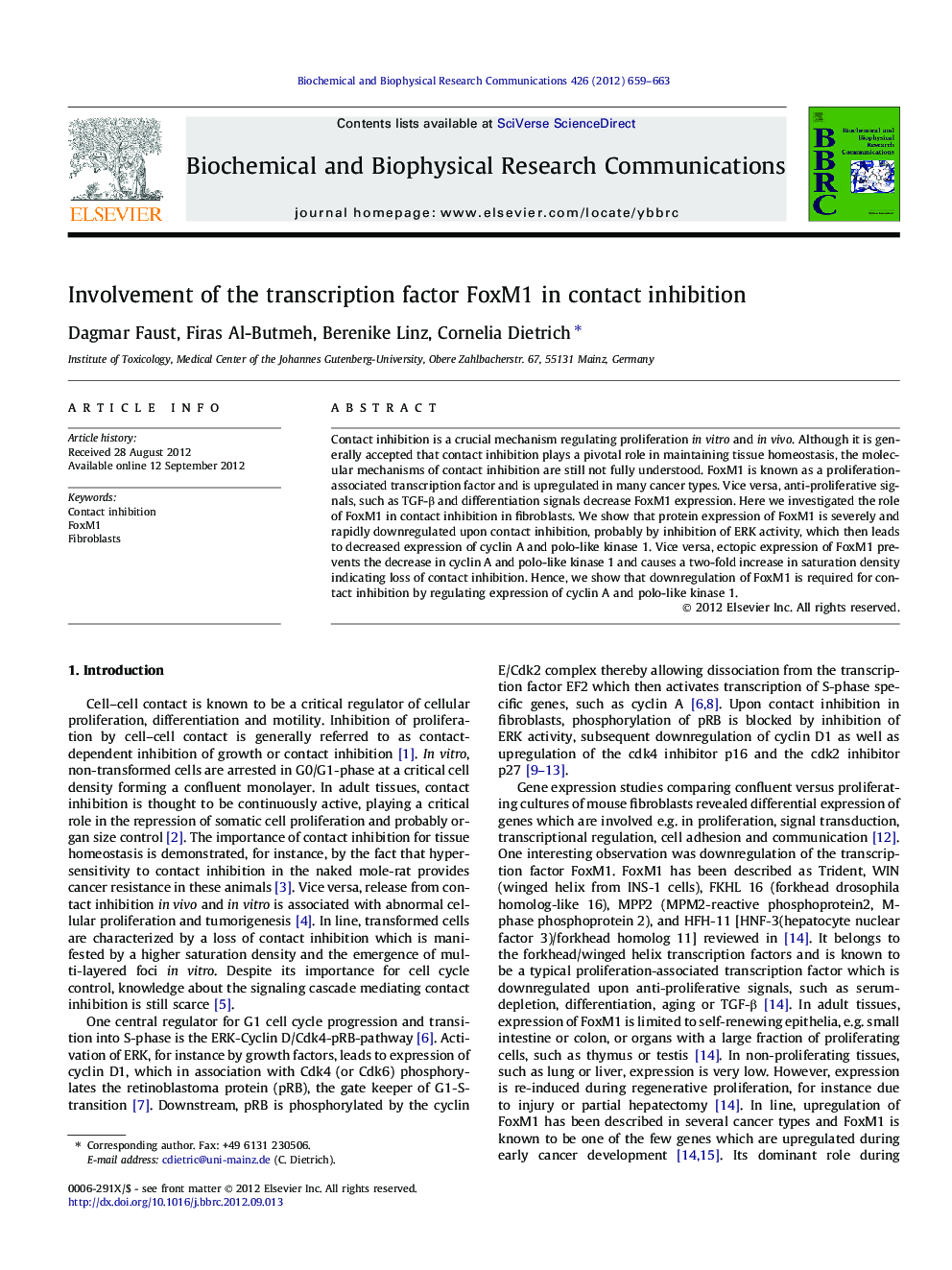| Article ID | Journal | Published Year | Pages | File Type |
|---|---|---|---|---|
| 1929296 | Biochemical and Biophysical Research Communications | 2012 | 5 Pages |
Contact inhibition is a crucial mechanism regulating proliferation in vitro and in vivo. Although it is generally accepted that contact inhibition plays a pivotal role in maintaining tissue homeostasis, the molecular mechanisms of contact inhibition are still not fully understood. FoxM1 is known as a proliferation-associated transcription factor and is upregulated in many cancer types. Vice versa, anti-proliferative signals, such as TGF-β and differentiation signals decrease FoxM1 expression. Here we investigated the role of FoxM1 in contact inhibition in fibroblasts. We show that protein expression of FoxM1 is severely and rapidly downregulated upon contact inhibition, probably by inhibition of ERK activity, which then leads to decreased expression of cyclin A and polo-like kinase 1. Vice versa, ectopic expression of FoxM1 prevents the decrease in cyclin A and polo-like kinase 1 and causes a two-fold increase in saturation density indicating loss of contact inhibition. Hence, we show that downregulation of FoxM1 is required for contact inhibition by regulating expression of cyclin A and polo-like kinase 1.
► The transcription factor FoxM1 is downregulated upon contact inhibition. ► The decrease in FoxM1 levels occurs very likely due to inhibition of ERK activity. ► The decrease in FoxM1 is not sufficient, but required for contact inhibition. ► We propose a new model of contact inhibition involving pRB/E2F and FoxM1.
